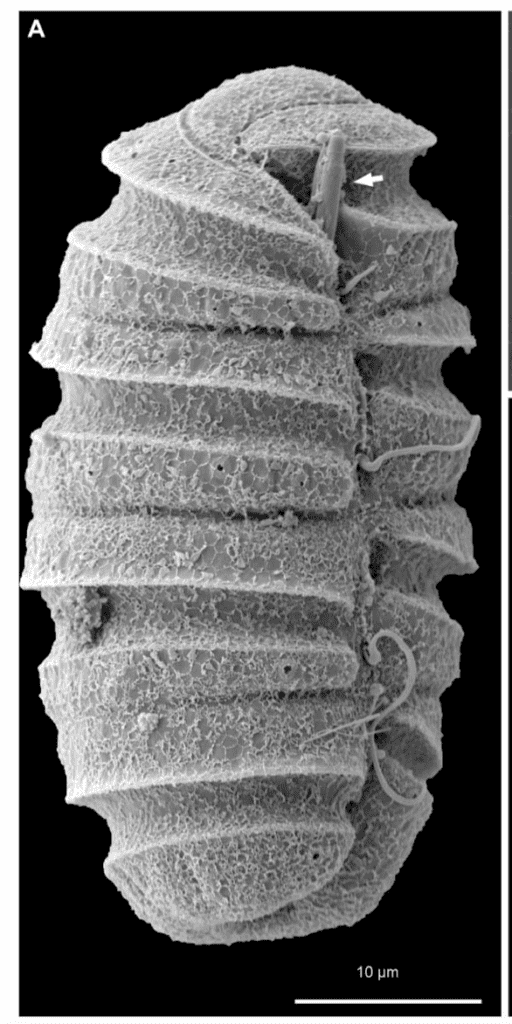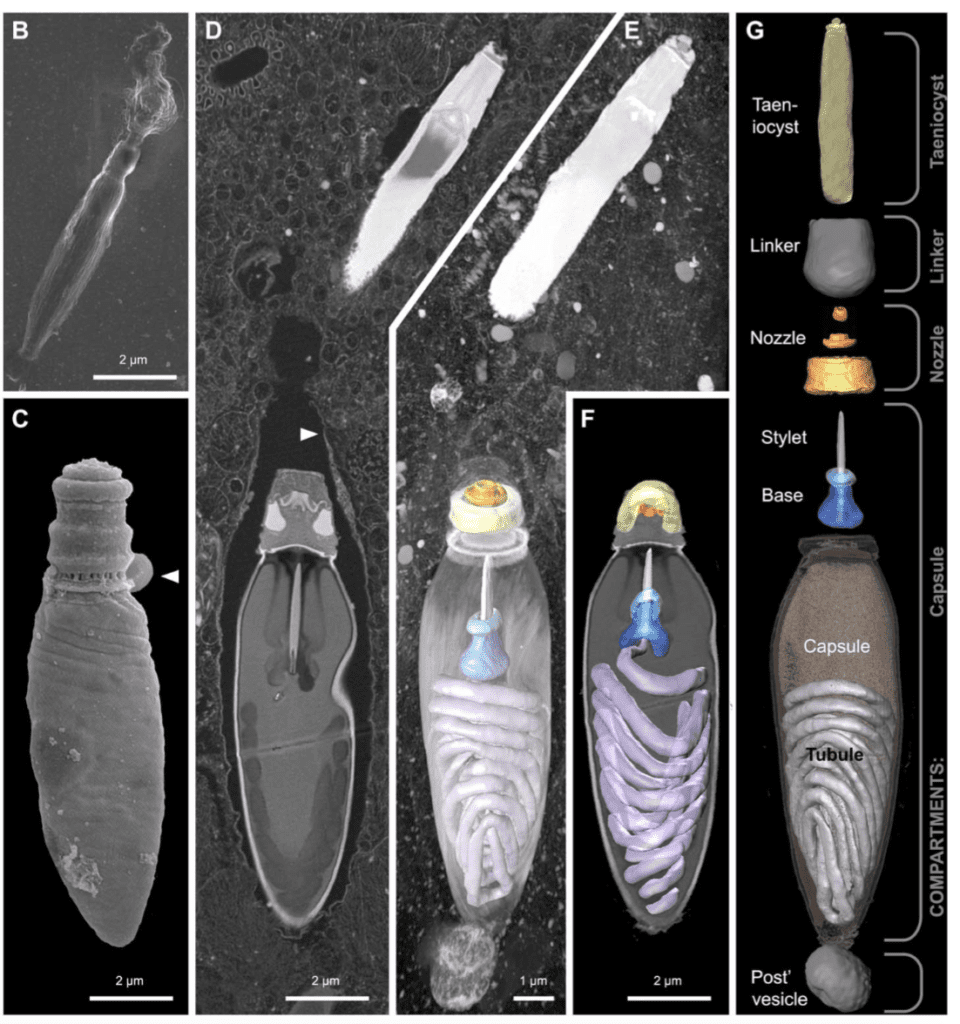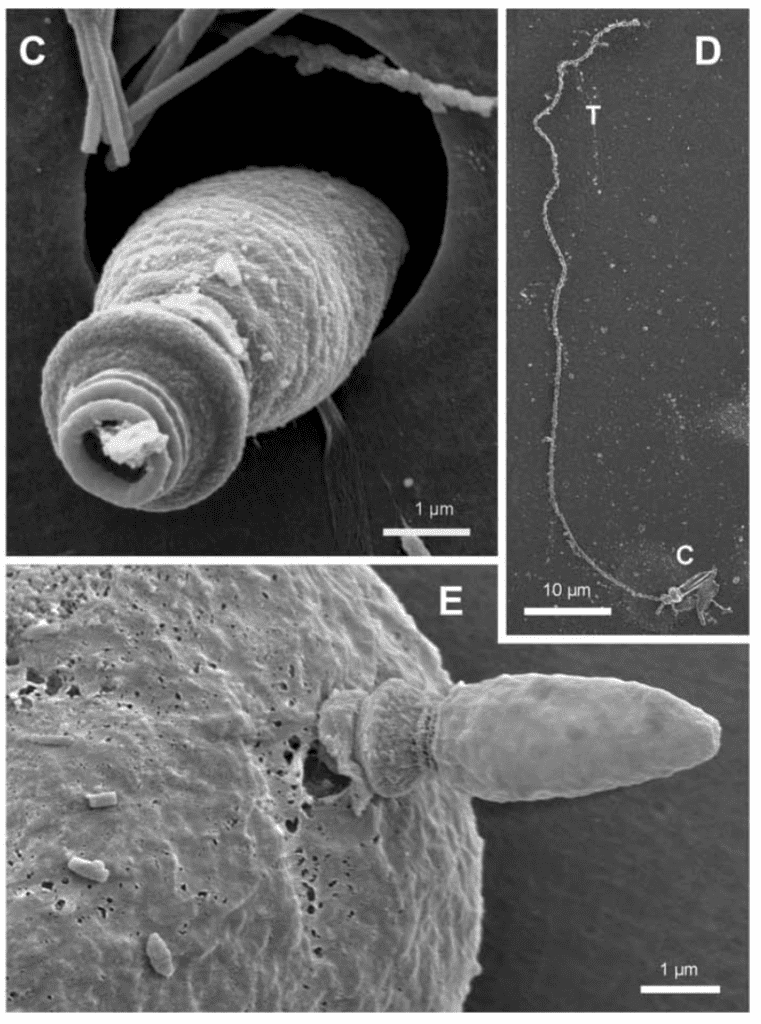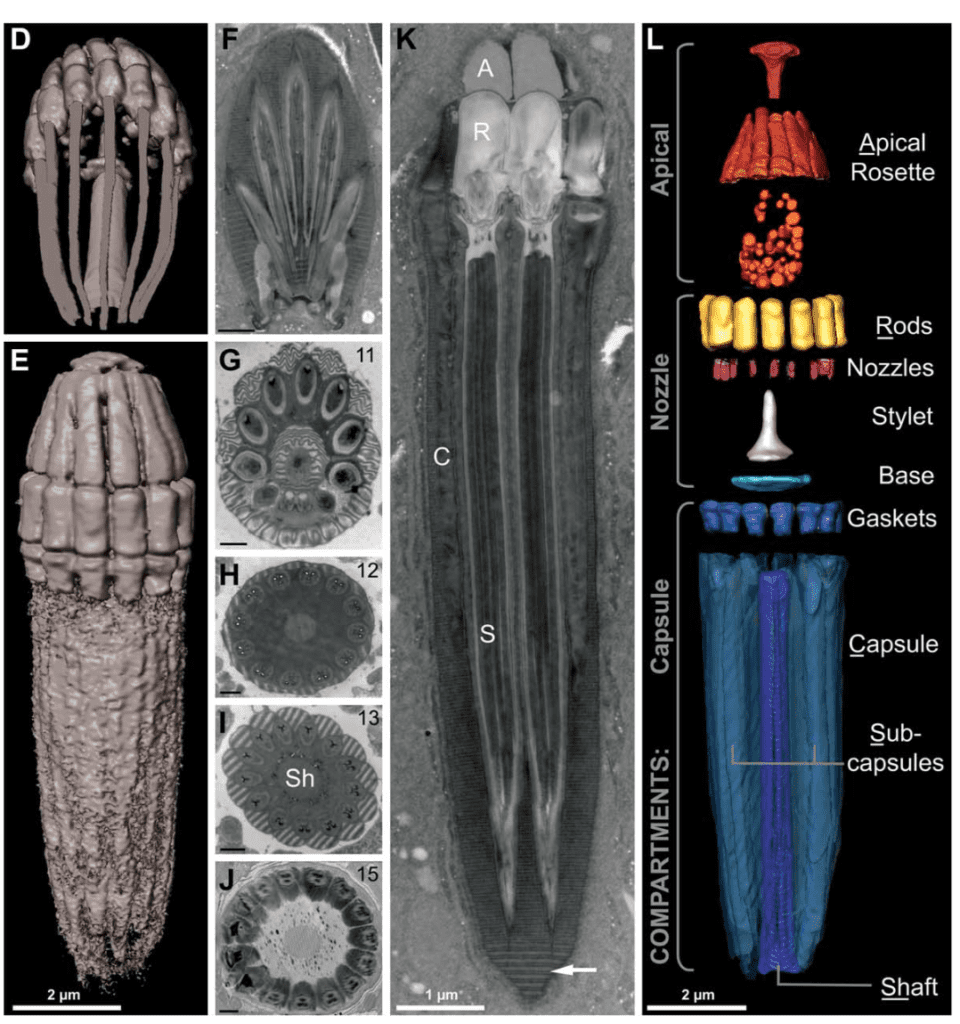Plankton might be a whole lot more ‘Grayjoy’ than ‘Tyrell’. A recent paper shows that these seemingly innocent bits of life are armed to the teeth with stabbing appendages and even ballistic weapons.

SEM image of P. kofoldii. White arrow points to its taenlocyst.
All image credits Gavelis et al., (2017), Science Advances.
Hack, whack, pew-pew
An international team of researchers has captured the crispest images to date of the arsenals microbes employ to hack away at their fellows — and it’s seriously impressive, if a bit small. The tiny combatants pack spears, wicked harpoons, and even something that looks suspiciously similar to a bug-sized 15-barreled Gatling gun.
To get a better idea of what kind of heat these microscopical hordes are packing, PhD student Gregory S. Gavelis from the University of British Columbia, Vancouver, Canada and his team used a focused ion beam scanning electron microscope to snap 2D images which they then put together in 3D reconstructions.
The team started with single-cell dinoflagellate Polykrikos kofoidii, known to hunt plankton using a harpoon-like weapon. Their work showed that P. kofoidii uses a double step attack to capture and drag prey in. First, a taeniocyst (which is similar to a dart) is shot towards the prey, After making contact, it sticks to the hapless victim and injects a store of liquid through its membrane — the team doesn’t yet know what it is, but they suspect it’s a kind of venom.
The second phase of the attack is the harpooning itself. A weaponized organelle called nematocyst pierces the incapacitated prey and hooks it with a stylet and then it’s dinner time.
Ok, so they have tiny spears. Uuh, so scary. Us humans nailed that down a long long time ago, probably between figuring out how to sitting down and do fillings. It’s like you’re not even trying, plankton. You’ll need something a lot more dramatic to impress us. Something like…
A really tiny minigun
Another dinoflagellate the team worked with, a wild-caught Nematodinium, shows something strikingly similar to a ballistic weapon. The cell is topped with a radial structure which crowns a nematocyst with 11 to 15 ‘barrels’. The organelle rings one side of the Nematodinium’s outer membrane, making it resemble a Gatling gun. Its internal structure is also eerily similar to what you’d expect to see in a firearm, further suggesting that its role is either to hunt down prey or fight off predators.
The team also performed a full genetic analysis to find out where these dinofllagelates’ total lack of chill comes from, and if there’s any chance that the related phylum cnidaria (some species of whom use similar ballistic weapons) got them from the same ancestors. After pooling genetic data from over a hundred dinoflagellates, however, the team says both groups evolved these weapons independently, even if their results are very similar.
“Despite the misconception that phytoplankton are passive cells, eukaryotic algae have given rise to (and arose from) multiple predatory lineages and, in the process, have independently evolved sophisticated ballistic organelles that exceed those of animals in complexity,” the authors conclude.
The paper “Microbial arms race: Ballistic “nematocysts” in dinoflagellates represent a new extreme in organelle complexity” was published in the journal Science Advances.












